- This photo essay shows pictures of Sikh Gurus over the centuries. To note the change see pics carefully.
Often there is a
popular conception, whenever one talks of the revered Sikh Gurus, in terms of
iconography. The latest hukamnamas of
the Shiromani Gurdwara Parbandhak Committee (SGPC) have categorically stated
that there should be no depiction of the Sikh Gurus. However, that was
certainly not the case for centuries.
This is a photo
essay that shows pictures of Sikh Gurus over the centuries, many of which also
turned out to be beautiful pieces of art reflective of prevalent historical
trends of the time.
From
the Historical to the Current
While it is
interesting to note that the current image (picture 1) of Guru Nanak Dev ji
that is today in popular memory is a series of paintings done by Sir Sobha
Singh, the famous Sikh artist. This was of course a modern rendition - in the
eighteenth century (1733 to be precise), a very different picture of Guru Nanak
Dev ji was acceptable to the Guru sangats. This image (figure 2) comes from a Janamsakhi that was commissioned by a follower of the Gurus named Sangu Mall and written in the hand of Daya Ram Abrol and illustrated by Alam Chand.
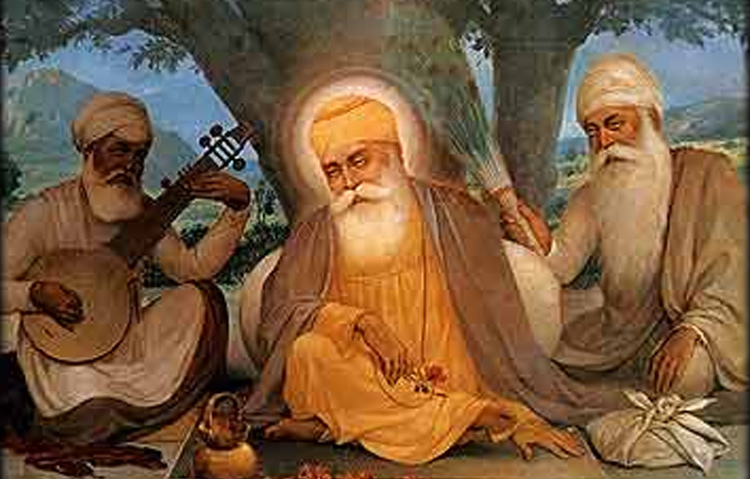 Sobha Singh’s rendition of Guru Nanak Dev ji. Mardana can be seen on the left in the rear holding the rabab.
Sobha Singh’s rendition of Guru Nanak Dev ji. Mardana can be seen on the left in the rear holding the rabab.
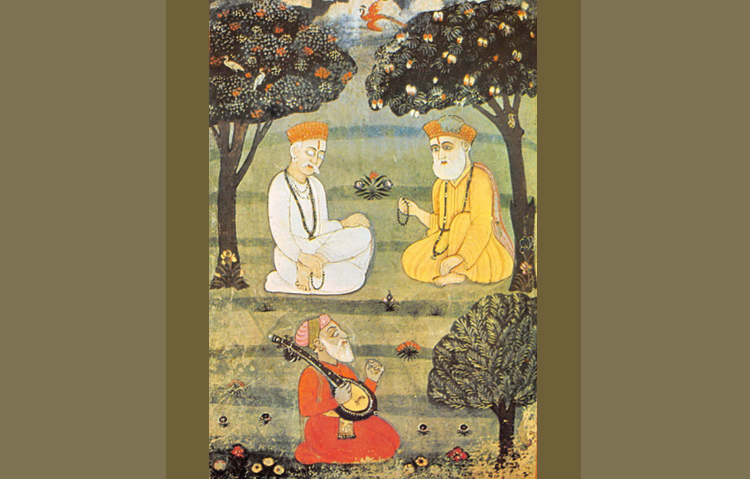 Alam Chand’s rendition of Guru Nanak Dev ji from 1733. Kabir ji is dressed in white, while Mardana, dressed in red, holds the rabab. Nanak Dev has jaap mala. in hand.
Alam Chand’s rendition of Guru Nanak Dev ji from 1733. Kabir ji is dressed in white, while Mardana, dressed in red, holds the rabab. Nanak Dev has jaap mala. in hand.
Source: B40 Janamsakhi
Of course, the
latest, thanks to SGPC interventions, has become a simple orb of light, as was
seen in the movie Nanak Shah Fakir.
With Guru (sixth)
Hargobind ji, the imagery transformation has also been seen on similar lines.
The present day painting by Sobha Singh (below 3) is a distinct departure from
the paintings of the earlier times, where the iconography is significantly
different.
 Sobha Singh’s rendition of Guru Hargobind ji.
Sobha Singh’s rendition of Guru Hargobind ji.
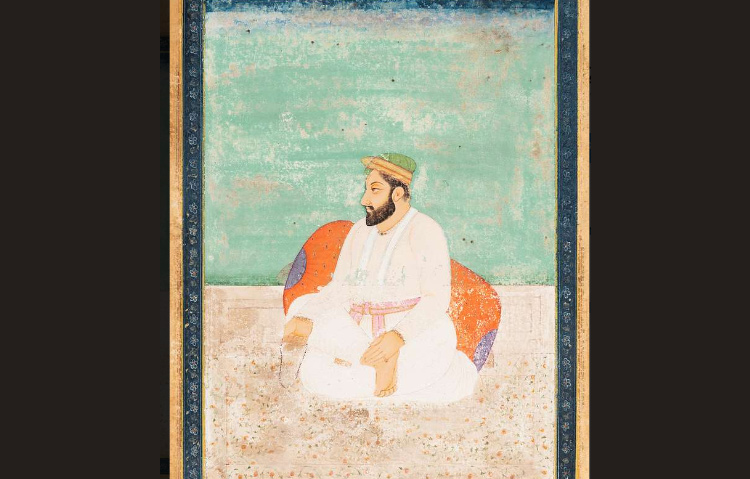 Rendition of Guru Hargobind ji from 19th century.
Rendition of Guru Hargobind ji from 19th century.
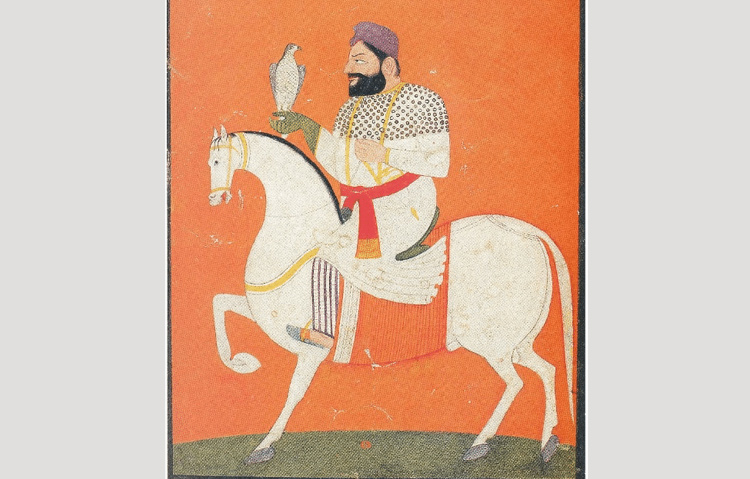 Rendition of Guru Hargobind ji riding.
Rendition of Guru Hargobind ji riding.
Source: the Chandigarh Museum
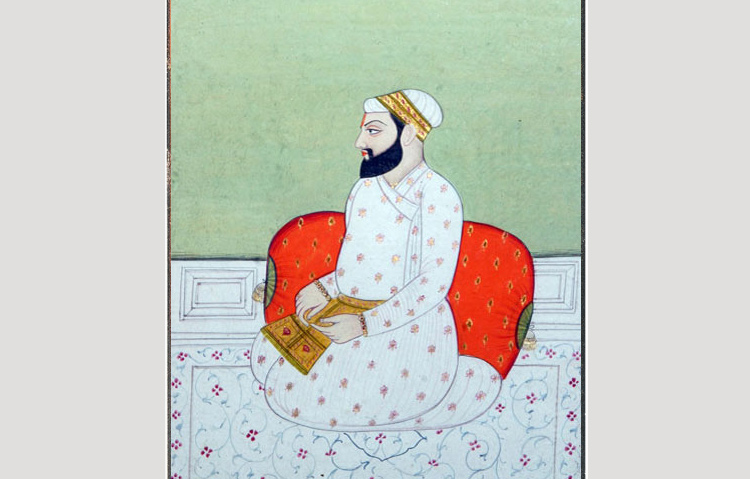 A 1800 Pahari painting rendition of Guru (fifth) Arjan Dev ji by Purkhu.
A 1800 Pahari painting rendition of Guru (fifth) Arjan Dev ji by Purkhu.
Source: Government Museum Chandigarh
Similar is the
case with Guru (ninth) Tegh Bahadur ji as well (7 and 8).
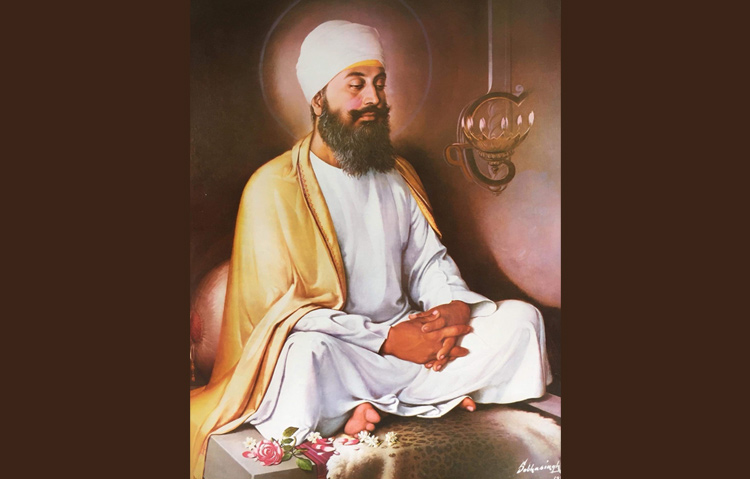 Sobha Singh’s rendition of Guru Tegh Bahadur ji.
Sobha Singh’s rendition of Guru Tegh Bahadur ji.
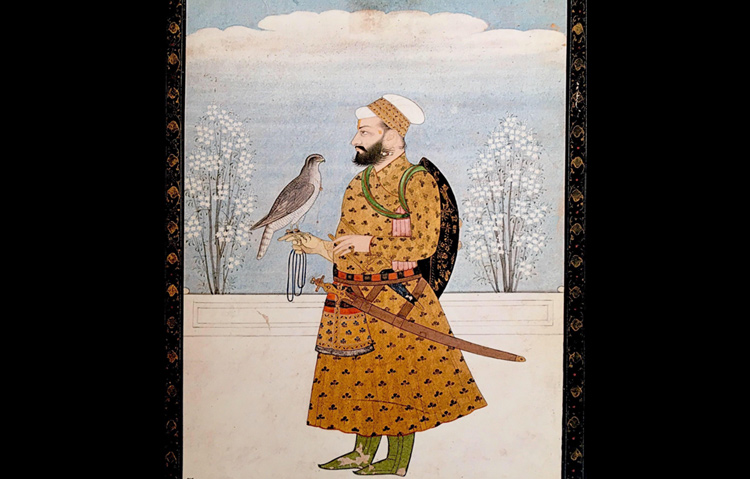 Guru Tegh Bahadur ji’s portrait dated 1800.
Guru Tegh Bahadur ji’s portrait dated 1800.
Source: Lahore Museum collection
And finally, we
can see a difference in the imagery of Guru (tenth) Govind Singh ji as well (9
and 10).
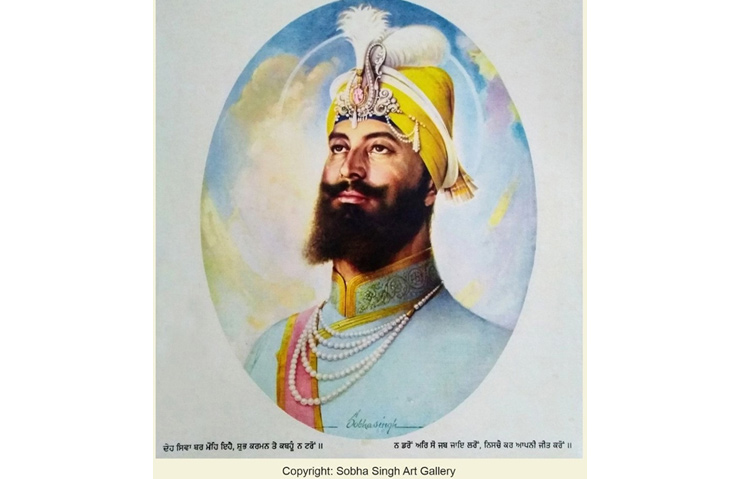 Sobha Singh’s rendition of Guru Gobind Singh ji. Copyright Sobha Singh’s art gallery.
Sobha Singh’s rendition of Guru Gobind Singh ji. Copyright Sobha Singh’s art gallery.
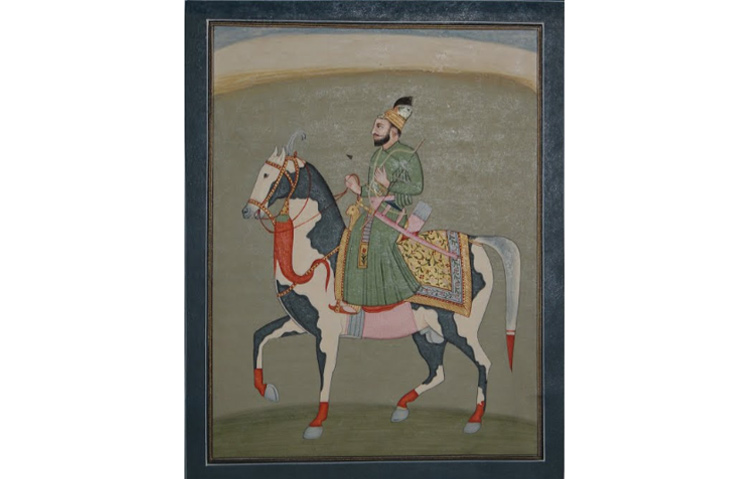 19th century rendition from Nainsukh’s workshop.
19th century rendition from Nainsukh’s workshop.
Source: Government Museum and Art Gallery, Chandigarh
To
see video interview of author on same topic (1 hour 41 minutes) This article and pictures should not be re-published or used without written permission of www.esamskriti.com or author.
To read all articles
on Sikh History
Also read
1. Is
SGPC trying to become a Sikh Vatican
2. Why
do Sikhs wear turbans
3. Why
was the first son made a Sikh
4. Is
Modern day Sikhism a colonial construct
5. History
of Sikhs
6. Album San Jose
Gurudwara, USA
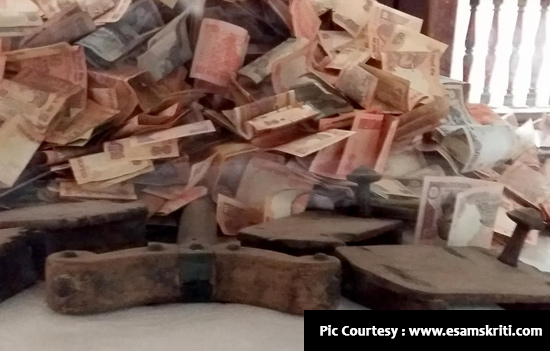 Charan Padukas Khadavas, wooden footwear of Guru Nanak and Baba Srichand. Lakhpat Gurdwara, Kutch.
Charan Padukas Khadavas, wooden footwear of Guru Nanak and Baba Srichand. Lakhpat Gurdwara, Kutch.
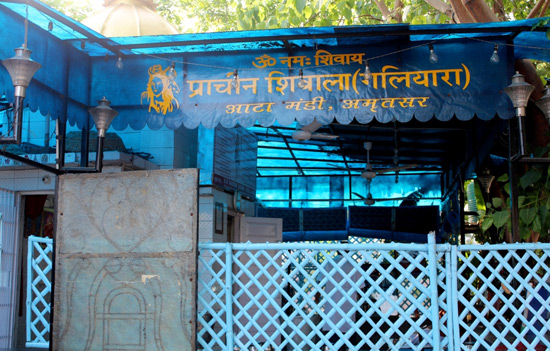 Shiv Mandir in Golden Temple complex.
Shiv Mandir in Golden Temple complex.